bonfire moss
(Funaria hygrometrica var. hygrometrica)
Conservation • Description • Habitat • Ecology • Use • Distribution • Taxonomy
Conservation Status |
|
|||||||
| IUCN Red List |
|
|||||||
| NatureServe | NNR - Unranked |
|||||||
| Minnesota |
|
|||||||
Description |
||
There are 189 accepted species of Funaria. Only two have been recorded in Minnesota. Bonfire moss (Funaria hygrometrica) is the most abundant species of Funaria and one of the most common and widespread mosses in the world. It is frequent to occasional in Minnesota. It often occurs in waste areas, and is especially common in recently burned areas and around campfire rings. It is also found in natural areas in swamps, fens, meadows, cattail marshes, and wet prairies. It grows in dense tufts and often forms extensive mats. The tufts are soft to the touch. Bonfire moss has an upright growth form (acrocarpous). The plant consists of a short, ⅛″ to ⅜″ tall, unbranched, leafy stem. The stem is green above, brown near the base. Lower leaves are small,scale-like, and appressed to the stem, making the lower stem appear leafless. This part of the stem is often buried below the surface of the soil. Thread-like outgrowths (rhizoids) on the lower stem anchor it to the soil. The rhizoids are colorless to reddish-brown, sparingly branched, and multicellular. The walls separating the cells are oblique. Upper leaves are oblong egg-shaped to broadly inversely egg-shaped, 1 ⁄16″ to ⅛″ long, and 1 ⁄32″ to 1 ⁄16″ wide, 2 to 3 times as long as wide. They are clustered at the top of the stem forming a rosette. The leaf blades are deeply concave on the inside, convex toward the margins. The midrib sometimes ends before the tip, sometimes extends beyond the tip creating a short pointed extension. The leaf blades are medium green to yellowish-green and translucent due to the very large transparent cells that form them. They have only a single layer of cells. The cells are hexagonal, thin-walled, and easily visible with a hand lens. Those toward the base are oblong-hexagonal. The upper and lower leaf surfaces are hairless. The margins are untoothed. At the end of many stems there is a long stalk (seta) supporting a spore-bearing capsule. The seta is slender, yellow to reddish, and smooth. It is usually ¾″ to 1¾″ long but may be up to 3⅛″ long. It is bent horizontally or nods downward at the tip from the weight of the capsule. It is twisted and bent in opposite directions, becoming entangled with adjacent setae. It usually readily absorbs water from the atmosphere (hygroscopic), twisting as it does. The capsule is 1 ⁄16″ to ⅛″ long, pear-shaped, asymmetric, and curved. At the end of the capsule there is an obliquely angled opening. When immature the capsule is light green and the opening is covered with a membranous hood (operculum) and a large, smooth cap (calyptra). The calyptra often has a beak as long or longer than the capsule. As it matures, the capsule develops a ring around the opening (annulus). When mature, the capsule is yellow or orangish-brown to brown. The annulus is large and rolled back. It eventually forces the operculum and calyptra to drop off exposing the capsule opening. Around the opening there are two sets of teeth. The outer teeth are red, lance-shaped, and angled inward, partially covering the opening. The inner teeth are yellow, narrower, and two-thirds as long as the outer teeth. The capsules become furrowed with age. Spores are dispersed late spring to mid-summer. |
||
Growth Form |
||
Acrocarp |
||
Height |
||
⅛″ to ⅜″ |
||
Similar Species |
||
American funaria moss (Funaria americana) seta are shorter, no more than ⅜″ long. The capsules are smaller, no more than 1 ⁄16″long. They are smooth and do not become furrowed with age. There is no annulus. |
||
Habitat |
||
Moist. Swamps, fens, meadows, cattail marshes, wet prairies, and disturbed microhabitats, especially burned over areas. Full sun to light shade. |
||
Ecology |
||
|
||
Use |
||
|
||
Distribution |
||||
|
Sources Janssens, Joannes A., and The Minnesota County Biological Survey, Minnesota Department of Natural Resources, State of Minnesota. County Atlas of Minnesota Mosses. May, 2000. |
|||
| 5/21/2023 | ||||
Nativity |
||||
Native |
||||
Occurrence |
||||
Common and widespread worldwide. Frequent to occasional in Minnesota. |
||||
Taxonomy |
|||
| Kingdom | Plantae (Plants) | ||
| Division | Bryophyta (Mosses) | ||
| Subdivision | Bryophytina (Moss) | ||
| Class | Bryopsida (Joint-toothed Mosses) | ||
| Subclass | Funariidae | ||
Order |
Funariales | ||
Family |
Funariaceae | ||
Genus |
Funaria | ||
| Species | Funaria hygrometrica (bonfire moss) | ||
Subordinate Taxa |
|||
|
|||
Synonyms |
|||
Funaria hygrometrica var. convoluta Funaria hygrometrica var. patula Funaria hygrometrica var. utahensis |
|||
Common Names |
|||
bonfire moss common cord-moss funaria moss |
|||
Glossary
Acrocarp
A moss that grows in cushions or tufts; has an upright growth habit; is usually unbranched or sparingly forked; and has the female sporophytes borne at the tips of stems and branches. Adj.: acrocarpous.
Annulus
On mosses: a ring of cells around the capsule opening beneath the operculum.
Calyptra
On mosses: A thin cap that covers and protects the capsule and operculum and drops off at maturity.
Operculum
On mosses: A lid or cover that covers the opening of a capsule and detaches at maturity.
Rhizoid
A filament arising from the lower stem of a moss, liverwort, or alga that anchors it to a substrate.
Seta
A stiff, hair-like process on the outer surface of an organism. In Lepidoptera: A usually rigid bristle- or hair-like outgrowth used to sense touch. In mosses: The stalk supporting a spore-bearing capsule and supplying it with nutrients. Plural: setae. Adjective: setose.
Visitor Photos |
|||||
Share your photo of this plant. |
|||||
| This button not working for you? Simply email us at info@MinnesotaSeasons.com. Attach one or more photos and, if you like, a caption. |
|||||
Luciearl |
|||||
… after rain and beautiful mosses |
|||||
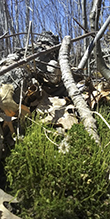 |
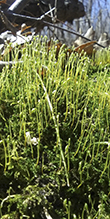 |
||||
Found on bottom of uprooted tree. |
|||||
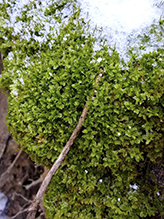 |
|||||
Not quite sure what this plant is. At first thought it was a moss, but looks like it has leaves. |
|||||
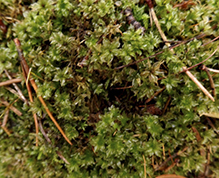 |
|||||
Nancy Falkum |
|||||
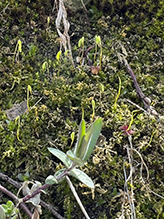 |
|||||
MinnesotaSeasons.com Photos |
|||||
|
|||||

Slideshows |
||

Visitor Videos |
|||
Share your video of this plant. |
|||
| This button not working for you? Simply email us at info@MinnesotaSeasons.com. Attach a video, a YouTube link, or a cloud storage link. |
|||
Other Videos |
|||
| Funaria Ch-09 Life Sciences, Botany, Zoology, Bio-Science |
|||
About
Published on Sep 27, 2017 CEC 09: Life Sciences Managed By UGC/CEC |
|||
| Funaria Lecture, BSc Botany by Dr. Ruby Singh Parmar. Guru Kpo |
|||
About
Published on Jul 10, 2013 This video is about life cycle of "Funaria" .In this video morphology and reproduction of Funaria has been discussed. |
|||


Created: 10/21/2018
Last Updated:




